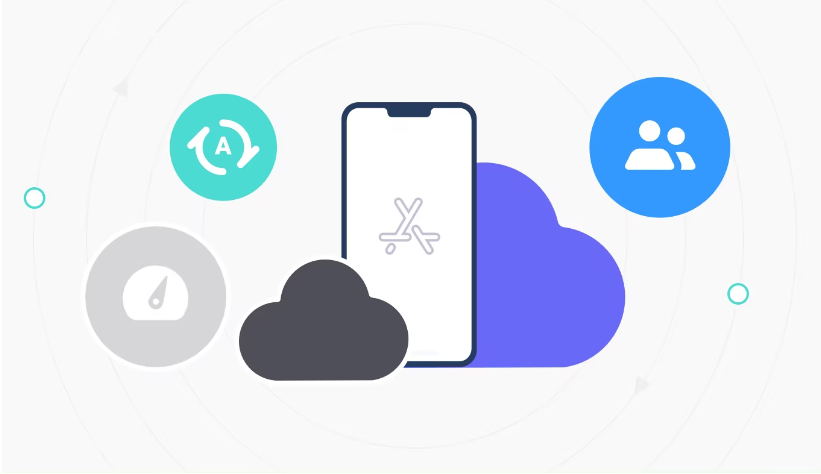Implementation Considerations of Cloud-Based Performance Testing
Cloud-based performance testing is a process that involves assessing the performance, scalability, and reliability of web applications in a cloud computing environment. It simulates real-world user interactions to measure and validate the responsiveness, speed, scalability, and stability of the applications.In this article, we will explore the implementation considerations of cloud-based performance testing and highlight key factors to consider for successful testing.
Implementation Considerations for Cloud-Based Performance Testing
While cloud-based performance testing offers numerous benefits, organizations must consider certain factors to ensure its successful implementation.
Load Generation and Simulation
Accurately simulating user loads is crucial for meaningful performance testing. Organizations should carefully analyze their application's expected user base and usage patterns to determine the appropriate load levels to simulate. Additionally, selecting the right load testing tools and techniques is essential to generate realistic loads and stress scenarios.
Network Bandwidth and Latency
The performance of web applications can be significantly affected by network conditions, including bandwidth limitations and latency. Organizations should account for network constraints during performance testing to identify potential bottlenecks and optimize application performance across different network environments.
Data Security and Privacy
When performing performance testing in the cloud, organizations must ensure the security and privacy of their data. They should work closely with cloud service providers to implement robust security measures, such as data encryption, access controls, and compliance with relevant regulations.
Monitoring and Analysis
Effective monitoring and analysis are essential for obtaining actionable insights from performance tests. Organizations should establish comprehensive monitoring mechanisms to collect relevant performance metrics during testing. Analyzing these metrics can help identify performance bottlenecks, diagnose issues, and optimize application performance.
Integration with CI/CD Pipelines
Integrating cloud-based performance testing with continuous integration and continuous delivery (CI/CD) pipelines enables organizations to incorporate performance testing as an integral part of their software development lifecycle. This integration ensures that performance testing is conducted regularly and automatically, providing early detection of performance regressions.
Selecting the Right Cloud Platform
When implementing cloud-based performance testing, choosing the right cloud platform is crucial. Consider the following factors:
Scalability and Performance: Evaluate the cloud platform's ability to scale resources and handle the desired load efficiently. Look for platforms that offer autoscaling capabilities to dynamically adjust resources based on demand.
Geographical Coverage: If your application has a global user base, ensure that the cloud platform has data centers in regions relevant to your target audience.
Integration with Testing Tools: Check if the cloud platform integrates seamlessly with the testing tools and frameworks you plan to use.
Pricing Model: Understand the pricing structure of the cloud platform and ensure it aligns with your budget and testing requirements.
Designing Realistic Test Scenarios
To achieve accurate performance testing results, it is essential to design realistic test scenarios that closely resemble the expected user behavior. Consider the following factors:
User Profiles: Create user profiles that reflect the characteristics of your target audience, including user types, preferences, and usage patterns.
Load Distribution: Define the distribution of user load across different geographical regions, considering the locations of your target audience.
Transaction Volumes: Determine the expected transaction volumes and frequency to simulate real-world application usage accurately.
Think Time and Ramp-Up: Incorporate think time (the time between consecutive user actions) and ramp-up periods to emulate realistic user behavior during testing.
Conclusion
Cloud-based performance testing offers significant benefits for organizations seeking to optimize their web applications' performance, scalability, and reliability. By leveraging cloud computing resources, businesses can efficiently simulate real-world user loads and assess application performance under various conditions. However, implementation considerations such as load generation, network conditions, data security, monitoring, and integration with CI/CD pipelines are crucial for successful cloud-based performance testing.
Start QA Testing With WeTest
WeTest Quality Open Platform is the official one-stop testing service platform for game developers. We are a dedicated team of experts with more than ten years of experience in quality management. We are committed to the highest quality standards of game development and product quality and tested over 1,000 games.
WeTest integrates cutting-edge tools such as automated testing, compatibility testing, functionality testing, remote device, performance testing, and security testing, covering all testing stages of games throughout their entire life cycle.
Give it a try for free today. Start Trial!


